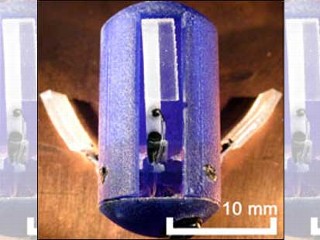Biosolids: What are they? To get straight to the point, it is whatever you can drop down the drain, but contrary to popular belief it's not the end of the road. Humans are no strangers to using animal by-products as fertilizers for crops so why is the use of human wastes such a big deal? are there some unknown facts the government is hiding, or is it all blown out of proportion by enviornment friendly organizations?
 |
| Yeah, sure. |
A report written by the Division of Environment Epidemiology says that the main risk is that biosolids hold pathogens. Pathogens are microscopic parasites and viruses that can infect and harm plants and animals. These microbes have been found in sewage wastes and if not treated properly will end up on crop lands and in our food supplies. The second danger is that inorganic chemicals like arsenic and mercury as well as organic chemicals like suficants and flame retartants from people pouring products down the drain could potentially contaminate the plants using biosolids and make them unknowingly dangerous for people. Third, is the detection of persistent organic pollutants which can potentially dangerous because it can add up in soils for very long periods of time and make the soil toxic. Finally critics say that although there hasn't been a documented case, there is a possibility for radioactive wastes to enter the sewer systems and in turn, enter the biosolid process.
 A little fun fact here: Ontario has been using biosolids for fertilization since the 1970's. Before it ends up on what is essentially your breakfast, a Government and Environment Ministry, covered by the Ontario Nutrient Management Act monitors the safe, proper treatment and distribution of biosolids on crops. Sewage plants are required to test for metals, bacteria and harmful organic materials. Some facilities don't test certain risk because there is either no health risk to check for or they do not even have a method to test or a system to check how dangerous, an example would be pharmaceuticals.
A little fun fact here: Ontario has been using biosolids for fertilization since the 1970's. Before it ends up on what is essentially your breakfast, a Government and Environment Ministry, covered by the Ontario Nutrient Management Act monitors the safe, proper treatment and distribution of biosolids on crops. Sewage plants are required to test for metals, bacteria and harmful organic materials. Some facilities don't test certain risk because there is either no health risk to check for or they do not even have a method to test or a system to check how dangerous, an example would be pharmaceuticals.As of now there has not been a documented case of health problems or any severe environmental damage in Canada or the United States. As quoted by Eileen Smith, from the Ministry of the Environment regarding the effects of biosolids: "There hasn't been any harm to human health or the environment" after a team tested plots of land that used biosolids for seven years.
Companies have been constantly trying to make biosolids safer and have promised environment agencies that they will look for solutions for problems they hope will never happen. So, if companies are solving problems biosolids don't even have yet, why are we so worried? Who cares what was used to help your breakfast bagel grow, our first and only concern is "Is what I am eating safe?" The answer will always be yes, Bon Appetit!
Companies have been constantly trying to make biosolids safer and have promised environment agencies that they will look for solutions for problems they hope will never happen. So, if companies are solving problems biosolids don't even have yet, why are we so worried? Who cares what was used to help your breakfast bagel grow, our first and only concern is "Is what I am eating safe?" The answer will always be yes, Bon Appetit!
Sources
http://www.biosolids.com/Headlines/archives/000533.shtml
http://cropsoil.psu.edu/extension/esi/biosolids-use
http://www.omafra.gov.on.ca/english/nm/nasm/sewbiobroch.htm
http://www.thestar.com/article/459347
http://www.vdh.state.va.us/epidemiology/DEE/documents/Biosolidsfinal.pdf
Comments
http://ankerlovesbio.blogspot.com/2011/04/biosolids-ew-but-wait.html?showComment=1304951874906#c4942503320099688406
http://bioblog-erica.blogspot.com/2011/04/biosolids-are-used-as-fertilizers.html?showComment=1304949872761#c3692484478014538440












